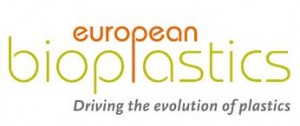EuBP: current bioplastics production requires ‘minimal’ land area
The production of feedstock for the manufacture of bioplastics accounts for “only a minimal fraction” of global agricultural area, according to data released by the European Bioplastics organisation this month (April 2013).
“The surface required to grow sufficient feedstock for today’s plastic production is less than 0.006% of the global agricultural area of 5 billion hectares,” the Berlin-based industry body states.
Data for the new brochure ‘Bioplastics – facts and figures’ published by European Bioplastics was based on figures from the Food and Agriculture Organization of the United Nations (FAO), and calculations by the Institute for Bioplastics and Biocomposites (IfBB), University of Hannover, Germany.
“In a world of fast growing population with an increasing demand for food and feed, the use of feedstock for non-food purposes is often debated controversially,” European Bioplastics concedes, adding that the new brochure “moves the discussion on to a factual level”.
The market data depicts production capacities of around 1.2 million tonnes in 2011, which translates to about 300,000 hectares of land-use to grow feedstock for bioplastics, compared to the global agricultural area of 5 billion hectares.
“Metaphorically speaking, this ratio correlates to the size of an average cherry tomato placed next to the Eiffel Tower,” European Bioplastics says.
“A glance at the global agricultural area and the way it is used makes it abundantly clear: the 0.006% used to grow feedstock for bioplastics is nowhere near being in competition with the 98% used for pastures and to grow food and feed.”
According to European Bioplastics, increasing the efficiency of feedstock and agricultural technology will be key to assuring the balance between land-use for innovative bioplastics and land for food and feed.
“The emergence of reliable and independent sustainability assessment schemes will also contribute to this goal,” the organisation concludes.


































